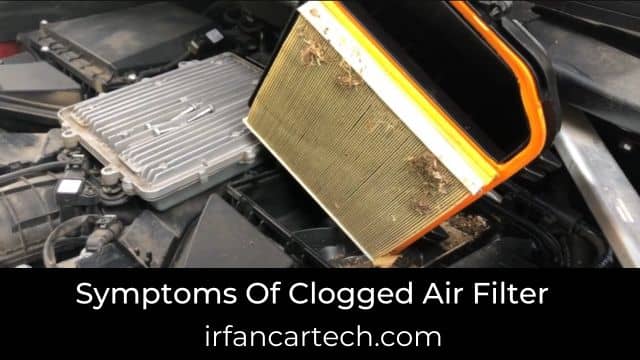Symptoms Of Clogged Air Filter And How To Fix it : Regular changing air filter in your HVAC system and vehicle can help the vehicle maintain optimal performance.
What Are Common Symptoms Of Clogged Air Filter ?
Common symptoms of a clogged air filter in a vehicle or HVAC system include
1.Decreased airflow from vents or reduced air circulation in side your vehicle.
2.Lower gas mileage in a vehicle due to restricted airflow to the engine.
3.Loss of power and acceleration in a vehicle.
4.Irregular engine operation caused by inadequate air supply.
5.Dark exhaust emissions in a vehicle, indicating a rich air-fuel mixture.
6.Unusual engine noise, like a sucking or wheezing sound.
7.Visual inspection of the filter may reveal it’s clogged with dirt and debris.
Clogged Air Filter Effect On Car
1.A clogged air filter restricts the flow of air to the engine, which can lead to reduced horsepower and acceleration. It makes it harder for the engine to breathe and operate efficiently.
2.When the engine doesn’t receive enough air, it may compensate by using more fuel to maintain power, resulting in decreased fuel efficiency and increased fuel consumption.
3.In sever cases a clogged air filter can allow contaminants like dirt and debris to enter the engine. This cause damage to engine components over time.
4.A clogged air filter can lead to rough idling or even stalling of the engine because it disrupts the air-to-fuel ration necessary for proper combustion.
5.Reduced air intake can lead to incomplete combustion, resulting in higher emission and potentially causing the vehicle to fail emission test.
How To Fix
1.Gather necessary tools and material, you might need basic tools. Ensure you have the correct filter for your specific make and model of car.
2.Locate the air filter which is usually located in a plastic or metal housing under the hood.
3.Carefully open the housing to access the old air filter.
4.Remove the old air filter, be mindful of any debris or dirt that might have accumulated in the housing.
5.Inspect the housing for any signs of damage or debris, clean it if necessary.
6.Install the new air filter into the housing.
7.Secure the air filter housing by reattaching any clips, screw or latches that were removed.
8.Test the engine to ensure that it’s running smoothly with the new air filter in place.
9.Dispose of the old air filter according to your local regulation.
10.Keep a maintenance schedule to prevent future clogs and maintain your car’s performance.
